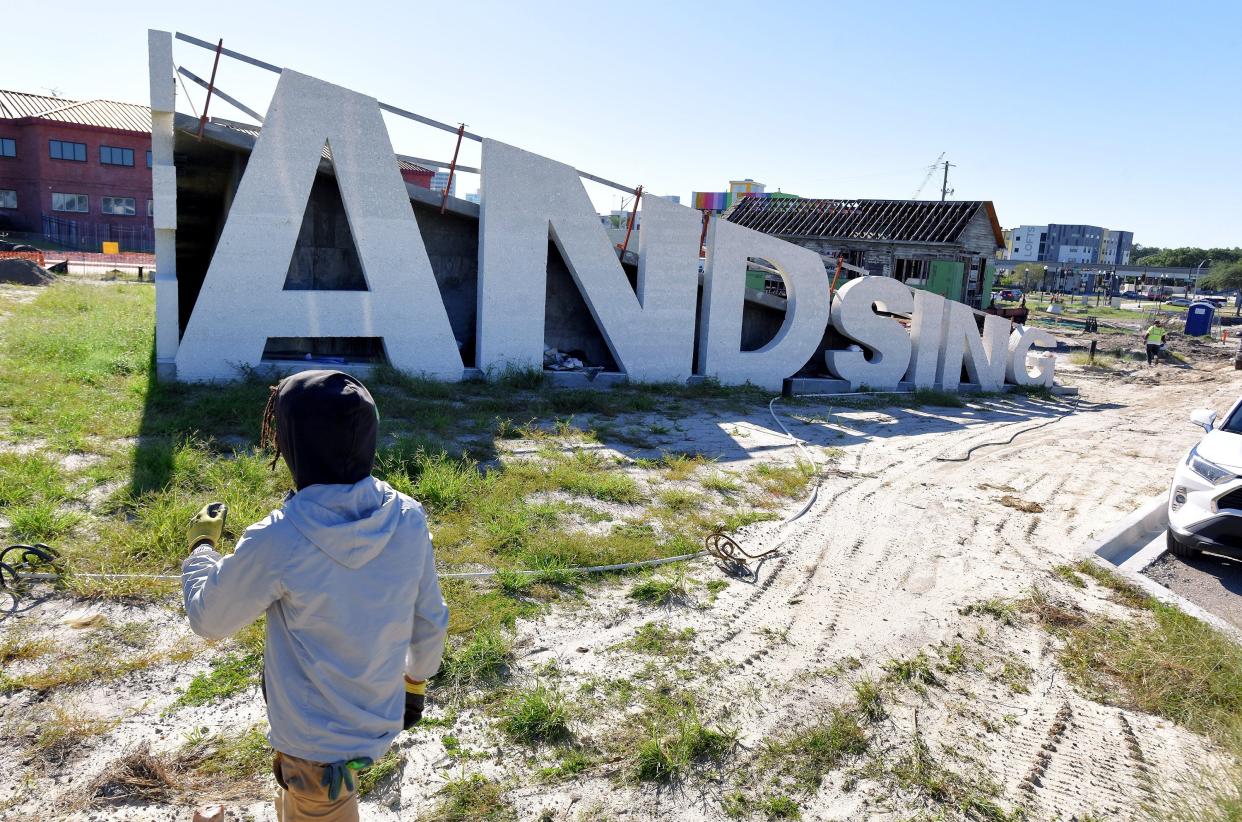Local historian: A perspective on Black Reconstruction in Jacksonville after the Civil War

Americans, if asked, often say that Reconstruction after the Civil War ended with the withdrawal of federal troops following the election of 1876. A generation ago, historian C. Vann Woodward in his groundbreaking book, “The Strange Career of Jim Crow,” described Reconstruction by Black and white Southerners lasting into the 1890s.
The end came with voter disfranchisement across the region. Jacksonville's story fits that pattern. As Union troops began rebuilding devastated Jacksonville before the end of the war, newcomers — including both white and Black people — played a major role.
Wellington Cummer came from Michigan to build the largest lumber mill in the city. William Barnett of Kansas established what became the largest bank in Jacksonville. Duncan Fletcher came from Georgia to practice law, was elected mayor (twice) and eventually served in the U.S. Senate.
The talented African Americans arriving here included Joseph E. Lee from Philadelphia, a graduate of Howard University who practiced law and rose to leadership in the Republican Party. A Georgia man, Joseph Blodgett, established his own construction firm and became Florida's first Black millionaire. Abraham Lincoln Lewis of South Carolina was one of five Black men forming the Afro-American Life Insurance Co.
The list could go on of Black and white citizens who built a tourist destination, international port, railroad hub and the largest city in Florida. Black Jacksonville citizens, who mostly lacked the financial resources of white citizens, worked in construction, hospitality, loading and unloading ships, on the railroads and more. Their work was foundational to creating this modern city.
They also developed their own churches, schools, small businesses, social clubs and entertainment venues. They joined labor unions, especially the Knights of Labor, and played a major role in local politics as part of the Republican Party — the party of Lincoln and emancipation.
In politics, Black and white citizens worked together to create a biracial community. The high point was the elections of 1887 when voters elected five Black individuals to a Republican-dominated city council. They also chose Lee as the city's municipal judge. The hiring of Black police and firefighters followed.
Sadly, the achievements were short-lived. A yellow fever epidemic in 1888 drove many residents from the city and put others on edge. In the spring of the following year, local white Democrats successfully petitioned the rural-dominated state Legislature to abolish the city's charter and with it the racially integrated city council.
The governor then appointed white Democrats to take their place. These actions became a turning point in Jacksonville's history.
Jacksonville native James Weldon Johnson wrote in his autobiography (published just a few years before his death) that in the 1880s, the city was a “good town for Negroes.” By 1907, Johnson and his brother, Rosamond, relocated to New York City like many others; Jacksonville had become, in his words, “a one hundred percent cracker town.”
In effect, biracial Jacksonville ended for the city's Black residents, particularly at the ballot, but also shortly thereafter in the dismissal of Black police and firefighters and formal segregation of restaurants, bars, theaters, street cars, parks and the railroad station. Yet, the city’s Black citizens did not give up.
In the face of Jim Crow, they created institutions that served themselves. Johnson, as principal of Stanton School, expanded classes to make it the first public high school for Blacks in the state. Charles Anderson opened a bank in the Masonic Temple. Methodist church leaders from the north partnered with local Black health care workers to create Brewster Hospital.
The indefatigable Eartha M.M. White (daughter of a slave) persuaded the City Council to provide land for two parks, one in Oakland and one in LaVilla. Standard Oil baron Henry Flagler provided land for two of his employees to create Manhattan Beach for Black people.
Mark Woods: It wasn't just another bombing. They survived and, 60 years later, returned to Jacksonville.
For many young Black Jaxsons, however, migrating north seemed preferable to laboring under Jim Crow, and in the years before World War I, some 6,000 left for better wages and opportunities.
What characterized Jacksonville's African Americans from the beginning of Reconstruction to its end with Jim Crow was a determination to have what most Americans dream about: family, jobs and a home. Prior to the 1890s, many white citizens worked with Black citizens toward those goals.
Letters: Using the14th Amendment to keep Donald Trump off 2024 ballot not a frivolous legal maneuver
These efforts were both individual and corporate. A white lawyer welcomed Lee into his practice upon his arrival in Jacksonville, while the Knights of Labor or the Republican Party worked to transform the local political and economic landscape.
Despite the pushback of the Jim Crow years, Black citizens continued to work toward achieving the American dream. They did not get there then but they kept trying — as they do today.
James B. Crooks, professor of history emeritus, University of North Florida, Jacksonville
This guest column is the opinion of the author and does not necessarily represent the views of the Times-Union. We welcome a diversity of opinions.
This article originally appeared on Florida Times-Union: Black, white citizens worked together in post-Civil War Jacksonville

